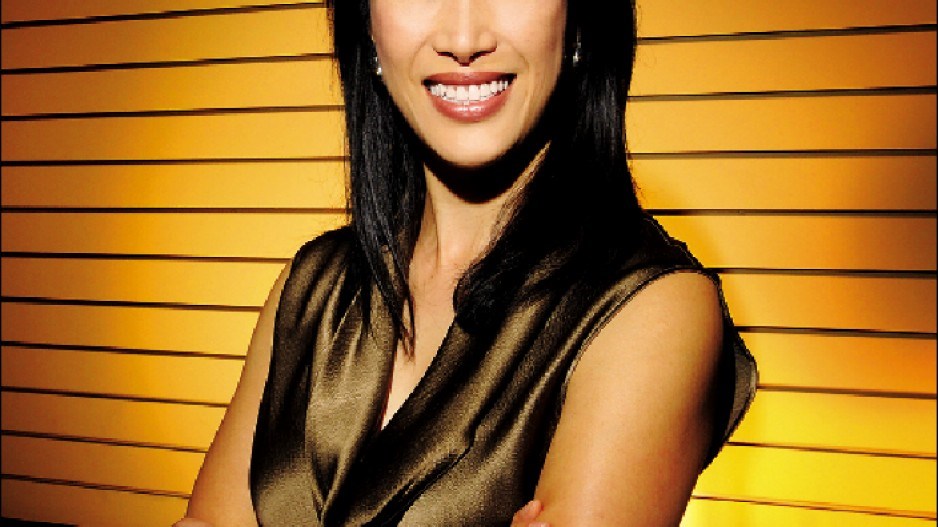Amiee Chan is just as comfortable in Norsat International Inc.’s boardroom as she is in one of the satellite equipment manufacturer’s engineering labs.
While her three U.S. patents in satellite technology and her electrical engineering PhD in satellite communications reflect a keen technical know-how of the science behind Norsat’s business, her managerial acumen is just as impressive.
When Chan took over as Norsat’s president and CEO in 2006, the Richmond company was nearly insolvent.
It had US$2 million convertible debt, about US$4 million in overdue accounts payable and reported an annual a loss of US$4.3 million on US$15 million in falling year-over-year revenue.
Chan instigated a restructuring that has led the company to four consecutive years of profitability.
Norsat’s previous top-heavy, high-paid executive team, which had a go-big strategy of focusing on very large contracts, was one of the first things to go when Chan stepped in.
As well, she relocated Norsat to more modest digs near the airport, where it can better serve its customer base; outsourced non-core functions; and broadened the company’s sales focus to include more of the military sector.
After the first three fiscal quarters of 2010, the company is on track to report US$2.5 million in profitability on roughly US$20 million in revenue in the fiscal year.
With Norsat’s recovery complete, Chan isn’t resting on her laurels: last month, the company completed its first major acquisition with her at the helm.
Norsat expects that its US$19.25 million acquisition of Sinclair Technologies Holdings Inc. will be the first of up to four major purchases the company makes in the next five years.
“We’ve done great work growing [Norsat] organically, but as a public company in our space, we need more growth,” said Chan.
“If we can become a $100 million company in the next five years, it will give us the capability to deal with larger customers and larger contracts, and garner more attention from the investment community.”
Born in Hong Kong and arriving in B.C. with her family when she was eight, Chan has an executive MBA from Simon Fraser University in addition to her PhD from UBC.
She began her career in the radio satellite division of MPR Teltech Ltd. in 1992.
MPR spun that division off in 1996 and, two years later, Norsat acquired it.
Although Chan swiftly climbed the ranks of Norsat from her initial role with MPR as an engineer-in-training, she became a casualty of a particularly rough patch at Norsat in the early 2000s.
But getting laid off provided her with an opportunity to complete her MBA and to obtain some much-needed experience in another field: from 2002 to 2004, she was a product manager at CREO Inc., where she led growth of the company’s $80 million consumables product line in the graphic arts industry.
When she was hired back at Norsat in 2004, it was as vice-president of operations.
In little more than two years in that role, she succeeded in doubling revenue in Norsat’s newest business unit – portable satellite terminals – to roughly $10 million.
Some of Norsat’s employees today supervised Chan while she was a co-op student at MPR.
In nominating Chan for an IWIB award, Josef Fikart, who retired as principal engineer of Norsat in 2004 but continues to consult the company, said that her technical expertise, coupled with her business and leadership skills, creates a mix that is somewhat unique but crucial for success in the high-tech sector.
Beyond Norsat, Chan is a board member of the Canadian Science and Technology Museum Corp., which is currently building support for a new museum in Ottawa.
She’s also an active member of the Society for Canadian Women In Science & Technology’s Ms. Infinity program, which encourages girls and young women to look at career options in the fields of science and technology.
In one of the program’s workshops, Chan takes 12- and 13-year-old girl guides to Stanley Park, where she trains them to use a satellite terminal to communicate with a satellite.
“I think girls and women enjoy science and technology, but they’re just not very confident with it,” said Chan. “There need to be more engineering women as role models. We try to hire female engineers. But it’s difficult: you post a job position, and 99 out of 100 resumĂ©s are from men.”
Chan’s manouvered her way through the high-tech sector as deftly as anyone, but she still experiences what she calls gender-related “micro-inequalities.”
For instance, on a business trip to Korea with a colleague, she was repeatedly mistaken as that colleague’s secretary, rather than his boss.
“They saw me as young, female and Asian,” said Chan. “How did she get to where she is?”
Between work and promoting science and technology to Canadians, Chan finds time for her husband, Chris, their 10-year-old daughter, Alyssa, and seven-year-old son, Matthew.
As well, she continues to play hockey, a sport she discovered a passion for during her university years. •




